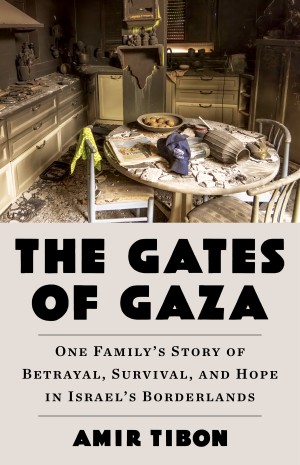To learn about the Holocaust experience of European Jews, we must supplement academic material with the personal stories of survivors, whose authenticity and insights are uniquely valuable.
From Darkness to Light is a collection of six short testimonies from four elderly Jewish survivors living in Israel. As its Israeli-based editor, Ronald J. Diller, explains, they “underwent atrocities and injustices that still plague their lives” but they also “never let Hitler kill their dreams to one day live in Israel, and for accomplishing this miracle, they won.” Diller succeeds in highlighting both the devastation and triumph of these narratives.
Lillian Ronen’s testimony, in “Christianity Saves My Life,” illustrates why a Jew might veer from their religionunder the severe pressures of the Holocaust. As a starving, terrified pre-teen in the Warsaw Ghetto from 1939 through 1941, she survived by helping to throw bodies into mass graves, and working for prostitutes (“decent women who had to become sex workers”). Nights passed fitfully in vermin-infested basements. Mrs. Ronen, now in her nineties, recalls that “harsh circumstance matured me like an adult and that scared me.”
Lillian soon took solace in the rituals and symbols of the Catholic religion. After the Warsaw Ghetto’s revolt failed, she spent over three dangerous years “passing” as a devout Catholic. She roamed through rural Polish towns, helped by many caring peasant families. At the war’s end, Lillian chose to recuperate in a Prague Convent. Years later in Israel, married and prosperous, she focuses on her children and grandchildren (a blessing saluted by many survivors as the best revenge.).
Miriam Wadislavki’s testimony also underlines a less common Holocaust experience. Unlike many survivor memoirists, she does “not remember being hungry in the ghetto. There was mutual help, and the Jews supported each other.” Likewise, at variance with many other survivors, she recalls that “generally, the relationship between ghetto Jews and the Judenrat(governing council, chosen by the SS) and Jewish police officers was one of understanding and cooperation.”
Miriam and her mother survived by doing hard work for non-Jewish peasants in the countryside, barely escaping from murderous Ukrainian loyalists. The twosome soon took charge of two female orphans who had escaped from a forest execution site. The quartet then narrowly made it through to 1945, when the area was liberated. Today, still haunted by hair-raising childhood memories, Miriam, in her nineties, enjoys fifteen grandchildren and eighteen great-grandchildren who mean everything to her.
Mordechai Mark, in his nineties, recalls that on arrival as a fourteen-year old teenager at the Auschwitz Death Camp his thirty-nine-year old mother “out of compassion for my grandmother, gave up her life, joined her in the line for the crematorium, to die together.” Later, at the Mauthausen Slave Labor Camp, food rations dropped far below the daily calorie requirement. Fortunately, a kitchen helper, Mordechai secretly aided starving others while declining offers of their gold teeth for food.
The other three testimonies in From Darkness to Light are similarly eye-opening.Taken together, the book’s six accounts humanize the Holocaust. While the survivors’ memories of unforgivable horror are distressing, their recollections of help and compassion will inspire.
Professor Emeritus of Sociology, Professor Arthur B. Shostak is the author in 2017 of Stealth Altruism: Forbidden Care as Jewish Resistance in the Holocaust. Since his 2003 retirement from 43 years teaching sociology he has specialized in Holocaust studies.




